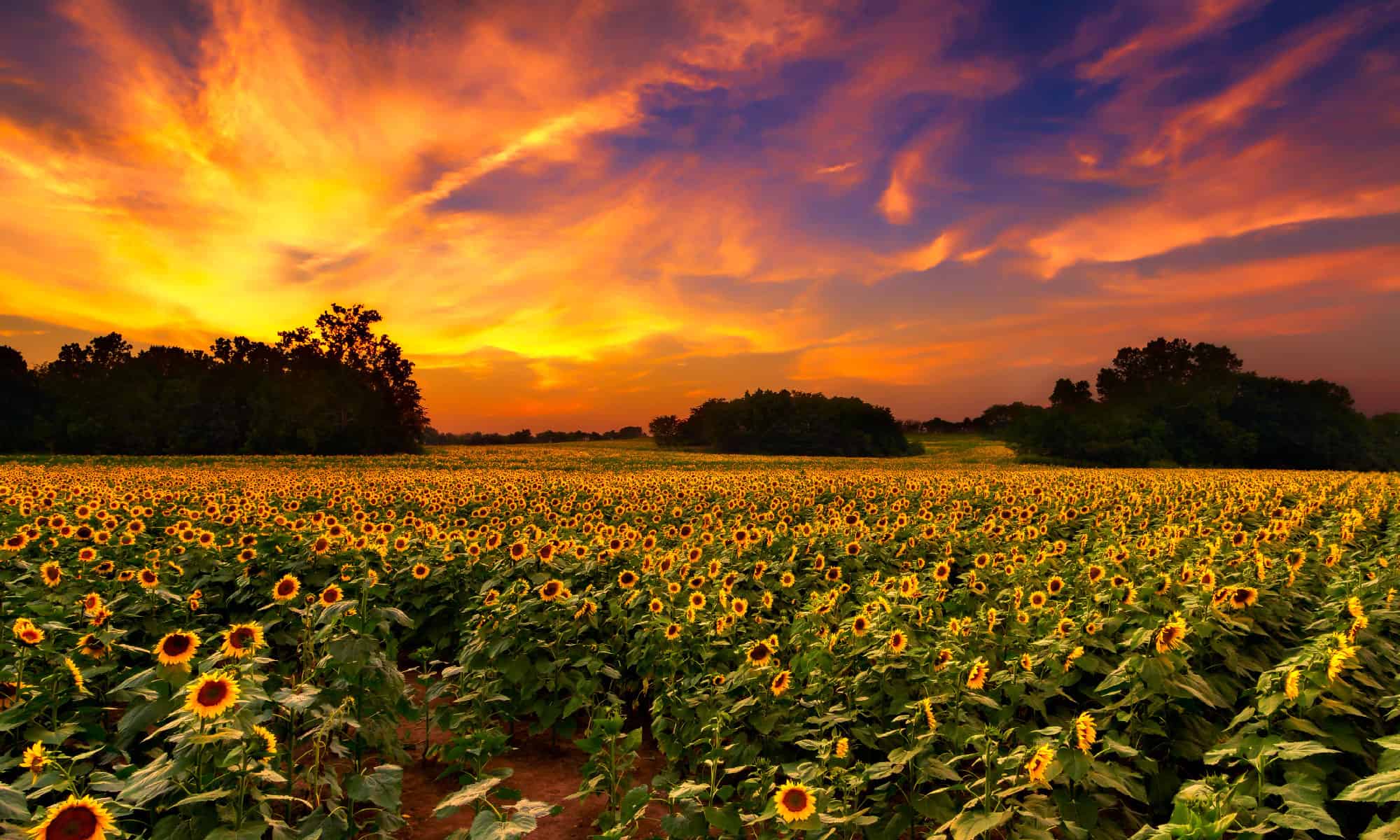Are you looking to add a splash of vibrant color to your garden? Discover the optimal time of year to plant sunflowers and ensure blooming success.
About Sunflowers

Not all sunflowers are yellow. There are many colors available now.
©Sab.D/Shutterstock.com
Sunflowers are a beautiful and unique species of flower. They are recognized by their vibrant yellow petals and dark brown centers. Sunflowers are annual plants that can reach heights of up to five feet tall. They are native to the Americas but can now be found all over the world.
The sunflower’s petals are arranged in a spiral pattern, with the centermost petal pointing directly toward the sun. This sun-seeking habit gives sunflowers their name. Sunflowers come in a variety of sizes, ranging from miniature varieties to giants, some of which can reach up to twelve feet in height.
Sunflowers are also known for producing a large quantity of seeds. These seeds can be used for food or for planting more sunflowers. Sunflowers have a long blooming season, typically lasting from late summer to early fall. During this time, they provide a warm and inviting atmosphere in any garden.
When Do You Plant Sunflowers?
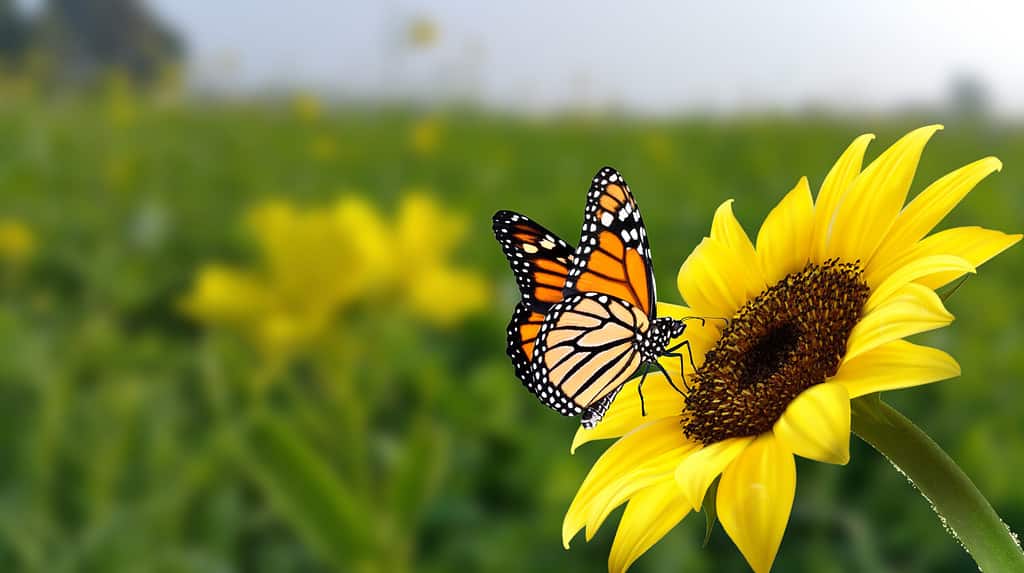
Most varieties of sunflowers take 70-90 days to bloom.
©Candy_Plus/Shutterstock.com
Plant sunflowers once the threat of spring frost is over. Wait until the soil has warmed up to a minimum temperature of 50°F (10°C).
This optimal period for sowing sunflower seeds varies depending on your geographical location. In regions situated in the northern half of the United States and in Canada, plant sunflowers in April, May, or June. However, if you reside in southern areas, you can anticipate this window occurring in March or April.
Sunflowers have a particular aversion to having their roots disturbed. Opt for direct sowing rather than transplanting when it comes to growing these vibrant blooms. By following this approach, you allow the seedlings to establish themselves more effectively without any root interference or potential damage.
How Long Does It Take For Sunflowers to Bloom?
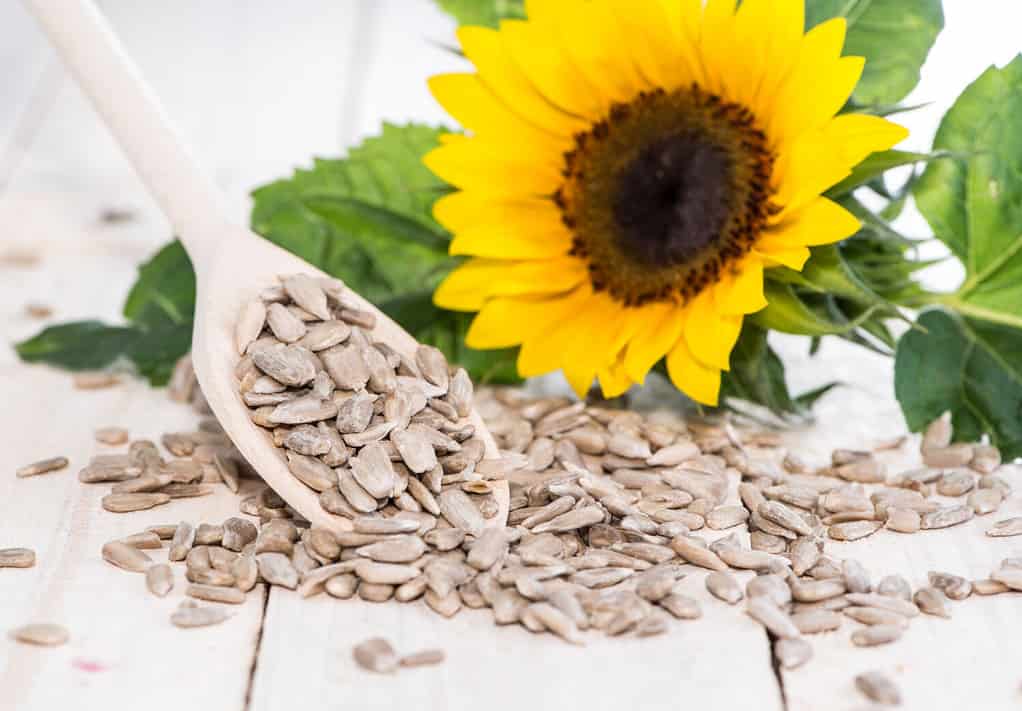
The seeds of sunflowers are much loved by people and birds alike.
©HandmadePictures/Shutterstock.com
Sunflowers are known for being a speedy bloomers, especially when you consider how tall they are. Typically reaching full growth in under 95 days. The tallest varieties of sunflowers can reach heights of over 16 feet, while smaller varieties are perfect for small spaces and pots and usually do not exceed one foot in height. The flower heads of larger-seeded types can be up to 12 inches in diameter when fully grown.
How Much Sun Do Sunflowers Need?
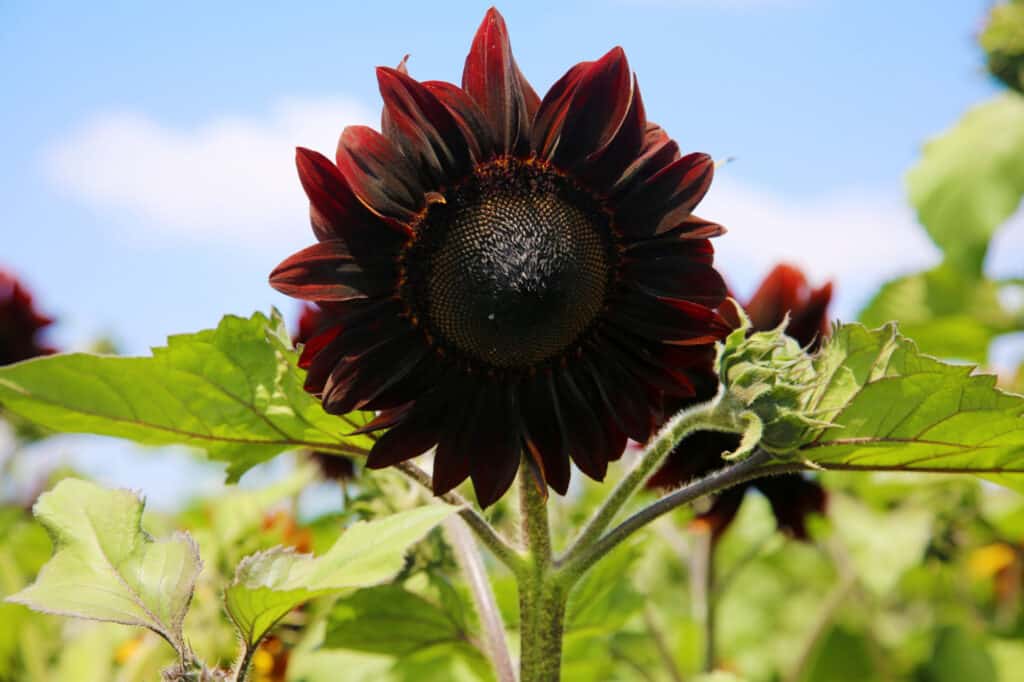
Sunflowers require at least 6 hours of direct sunlight per day.
©mikeledray/Shutterstock.com
It is important to locate your sunflowers in a spot with direct sunlight for approximately 6 to 8 hours per day. Additionally, it is essential to make certain the soil is well-draining and not too compacted. Sunflowers have deep tap roots that require a depth of two feet and a width of three feet. Lastly, they are not very picky when it comes to pH levels.
Sunflowers are hungry plants, so the soil needs to be full of nutrients and organic material or composted manure. It may also help to add a slow-release granular fertilizer 8 inches into the ground. Plant your sunflowers in a sheltered area, such as close to a fence or wall, since larger varieties can be easily toppled by strong winds.
How Do You Plant Sunflowers?

Plant your sunflower seeds after the soil is at least 50°F.
©Alina Demidenko/Shutterstock.com
Once the soil has heated up, plant sunflower seeds 1 to 1½ inches below the surface and leave a gap of about 6 inches between them. If desired, multiple seeds can be planted, and the strongest seedling can be kept when the plants reach 6 inches in height. Allow a good amount of space for sunflowers to spread out, particularly for short-growing varieties. Plant rows around 30 inches apart (or closer for miniature varieties).
You should apply fertilizer at the time of planting to help sunflowers develop strong roots and remain stable in windy conditions. It is recommended to space out plantings over the course of 6 weeks so that flowers can continue to bloom. To prevent animals from eating the seeds, it may be necessary to cover the planted area with netting until the seeds sprout.
How Much Water Do Sunflowers Need?

Water your sunflowers deeply but infrequently. They don’t like soggy soil.
©Mark Alexander/ via Getty Images
When the sunflower is still small, it is best to water the area around the roots so they can grow deeply. To keep the plant safe, place snail or slug bait around the stem. Once the plant has grown, it is best to water it deeply but not too often. Unless the weather is extremely dry or wet, give the sunflower a few gallons of water once a week.
How Much Food Do Sunflowers Need?
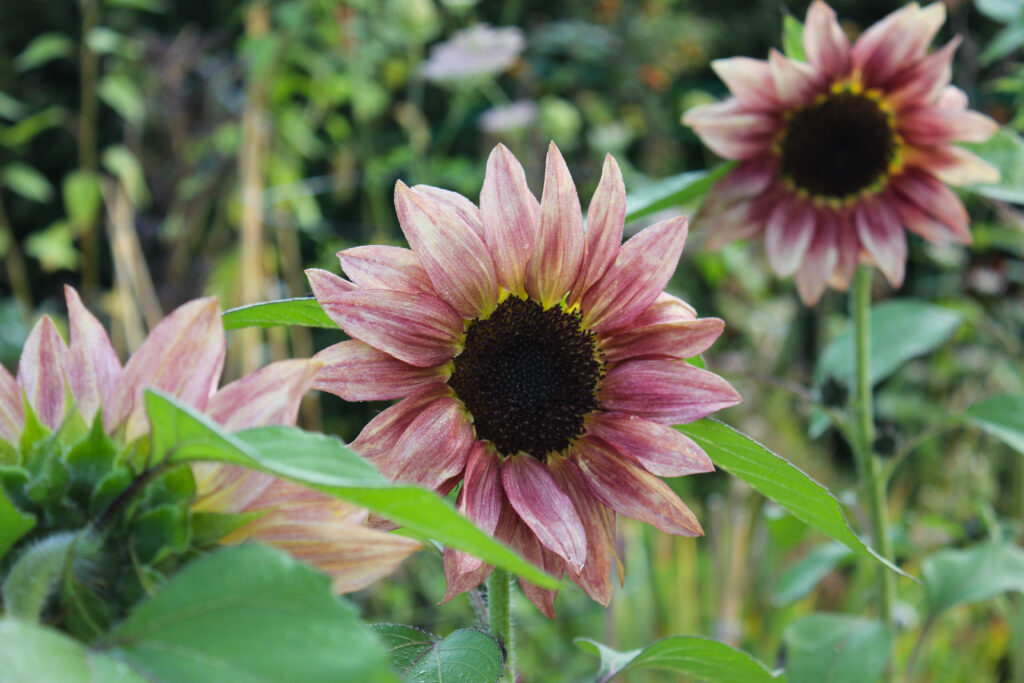
The petals of some sunflowers are purple.
©Stecher/Shutterstock.com
Sunflowers need a steady supply of nutrients to grow healthy and strong. Fertilizer is an essential part of keeping them nourished and growing. Here are some tips for fertilizing your sunflower plants:
- Feed your sunflowers with an all-purpose, balanced fertilizer at least once per month.
- Add a slow-release fertilizer at the beginning of the growing season for an extra boost of nutrients.
- When planting, mix in compost or aged manure to enrich the soil.
- Avoid over-fertilizing, as too much can burn the roots and damage the plant. It can also cause spindly, weak growth that breaks easily.
- Be sure to water your sunflowers regularly, as fertilizer won’t be as effective without adequate moisture.
By following these simple steps, your sunflowers will have the nutrition they need to thrive.
How Do You Harvest Sunflower Seeds?

If you don’t harvest your sunflower seeds, the birds will be happy to do it for you.
©Steven Giles/Shutterstock.com
To gather the sunflower seeds, permit the blossom to dry up until the back of the bloom is brown, the foliage turns yellow, the petals wilt, and the seeds appear plump and relatively loose in their holes. Utilizing sharp scissors or pruners, cut off the head of the plant. Leave about 6-8 inches of stem as a handle. Put the sunflower head on a smooth, clean surface and get a bowl to hold the seeds.
To get the sunflower seeds out of the flower head, you can either brush your hand over the seeded area or use a fork. You can also take the head of the flower and rub it across a washboard or something similar. If you’re going to use the seeds for roasting, you can place a lightweight fabric and a rubber band over the head to protect it from birds. Another option is to cut the flower head early and hang it upside down in a place away from birds and mice until it is dry.
Clean the sunflower seeds with water before spreading them out to dry. If you are looking to replant them, keep them in a sealed container in a cool and dry spot until you are set to sow them.
5 Gorgeous Sunflower Varieties
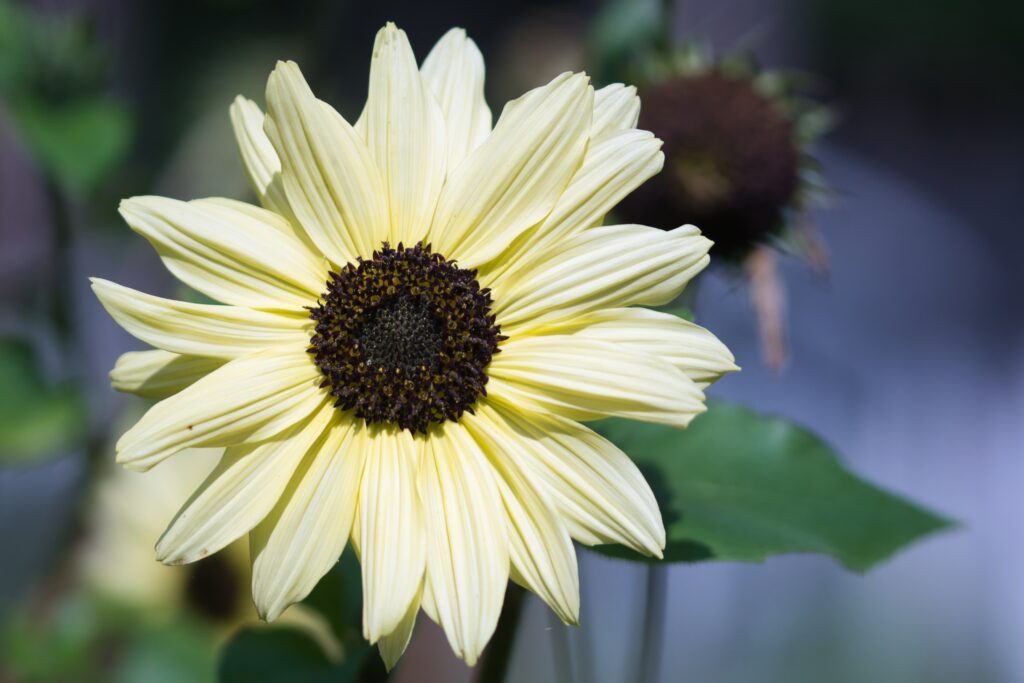
Italian white sunflowers have creamy white petals with a hint of yellow and very dark centers.
©Ewa-Saks/Shutterstock.com
- Mammoth Grey Stripe: This giant sunflower is known for its spectacular size. It produces enormous yellow petals that can reach up to 2 feet in diameter. Its center is made up of hundreds of tiny seeds, making it an ideal food source for birds and other wildlife.
- Teddy Bear: This small sunflower cultivar grows to just 2-4 feet tall, with bright yellow petals and bright lime green centers. Its petals are fuzzy and soft, like a teddy bear’s fur.
- Autumn Beauty Sunflower: This sunflower cultivar has petals in shades of yellow, orange, and red, making for a brilliant display in the fall. Its petals are smaller than other sunflowers, reaching up to just 6 inches across. The plant is around 6 feet tall.
- Lemon Queen: Pollinators truly love this sunflower. It reaches 7 feet tall and has bright yellow petals and a brown center. It takes 100 days to mature, but it is worth the wait.
- Italian White: This multi-stemmed sunflower has white blooms that look like Shasta daisies but are 5 feet tall. The centers are dark brown-black and contrast beautifully against the white petals.
Thank you for reading! Have some feedback for us? Contact the AZ Animals editorial team.

